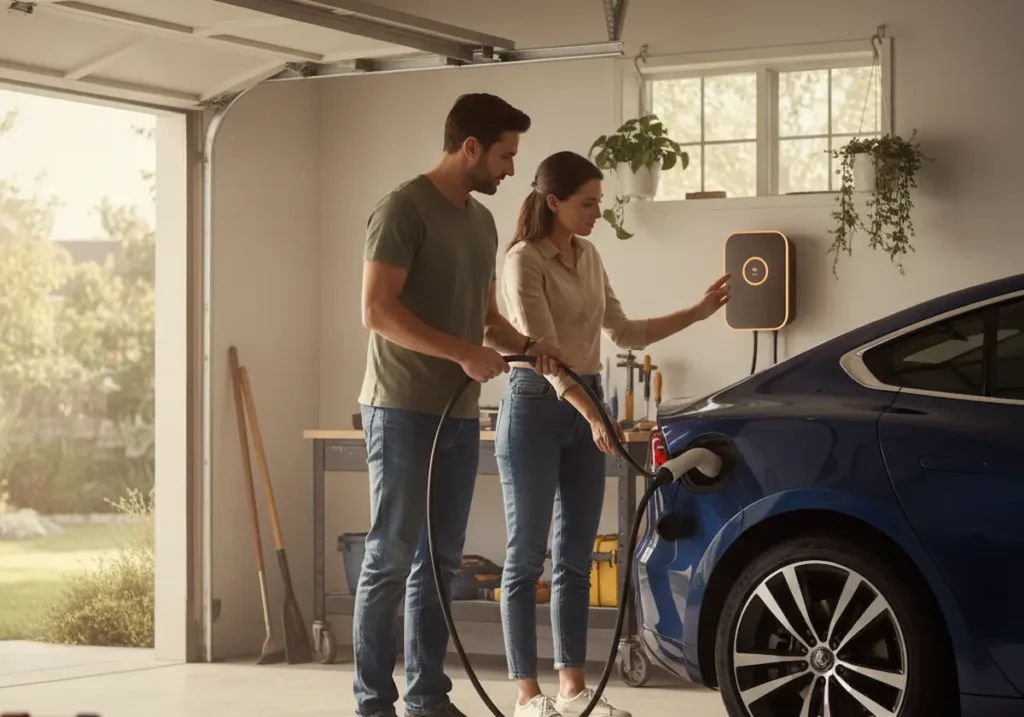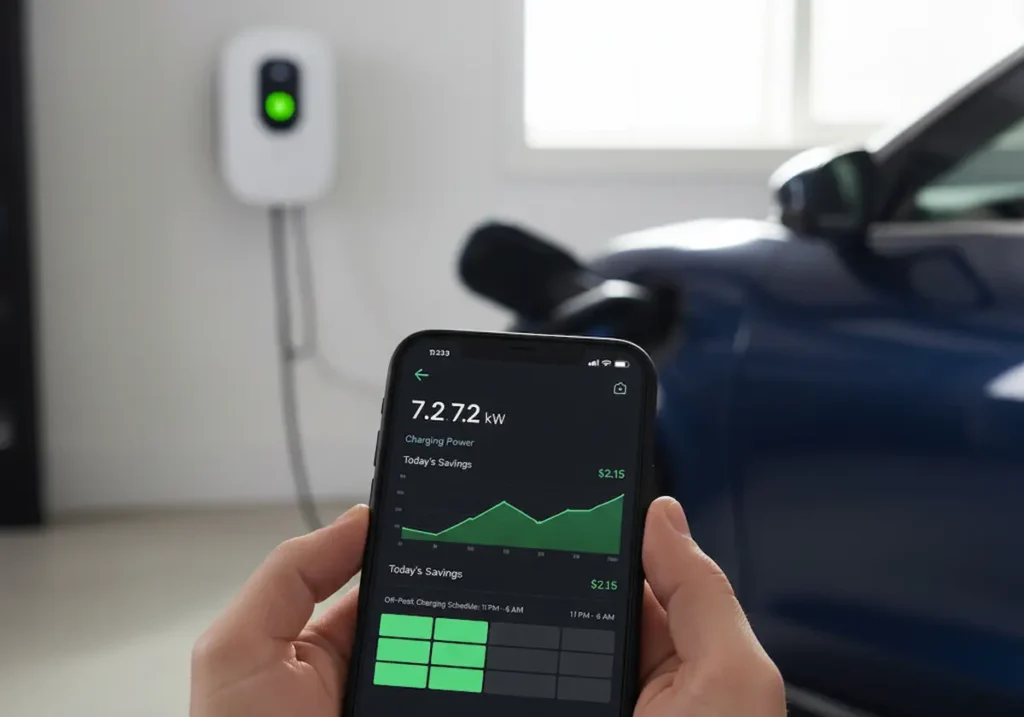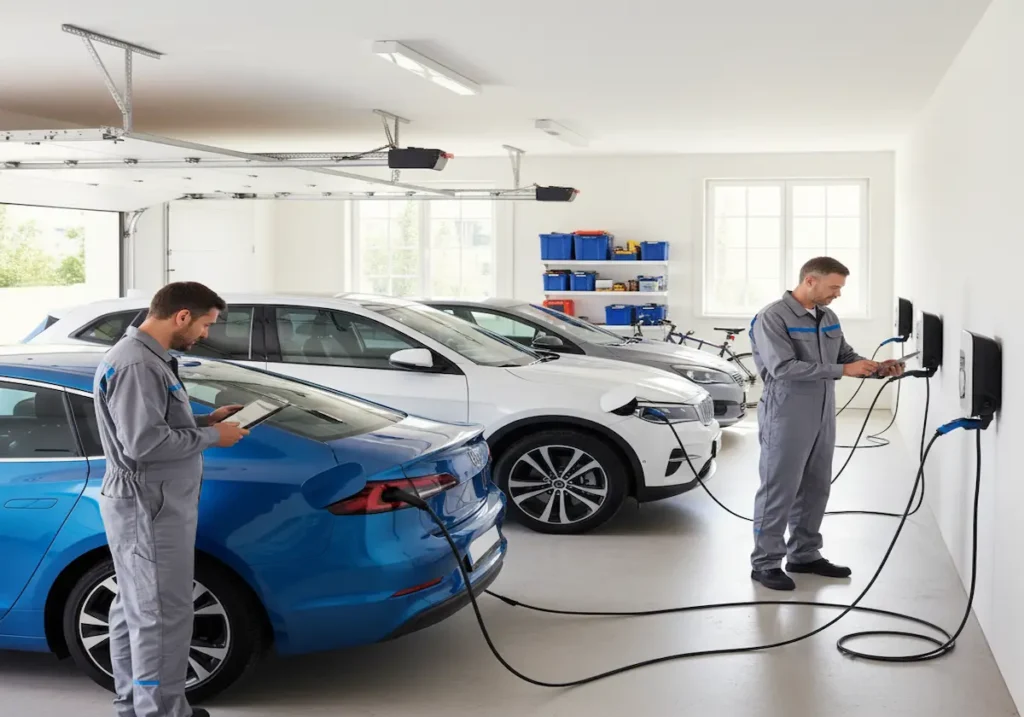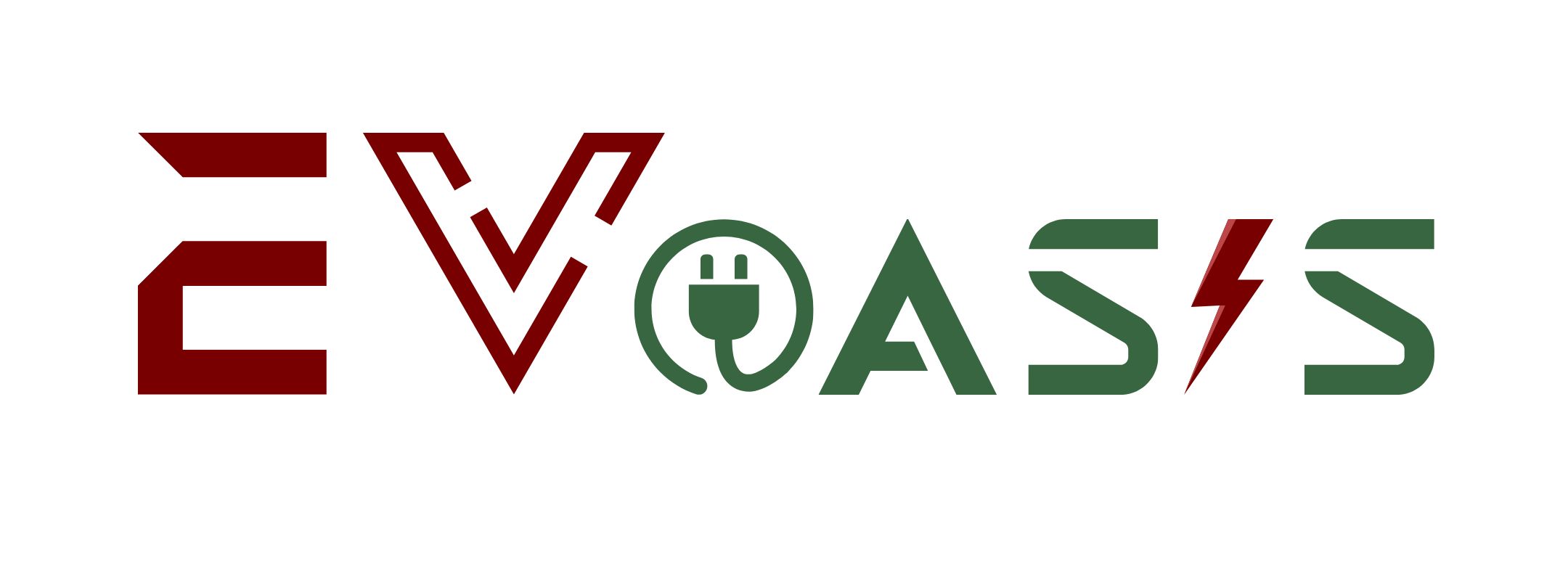Many Aussie drivers worry about the initial high expense of installing an EV charger at home. But the reality is that home charging saves you a lot of money over time. In fact, you’ll recover the starting cost more quickly than you might expect.
We’ve spent years working with electric vehicles, so we can give you a full cost breakdown without any fluff. By the end of this article, you’ll understand what you’re paying for and where your money goes.
In this blog, we’ll explain the actual costs of installing a home EV charger. We’ll also compare home charging costs with pricier public fast-charging. Plus, you’ll learn a few ways to lower your charging bills even more.
Ready to see why home EV charging is more affordable than you think? Let’s get going.
Breaking Down Home EV Charger Installations
When you look at the cost of a home charger, there are two parts to think about: the equipment and the installation. The equipment is the unit that goes on your wall, while the installation covers the work an electrician does to set it up safely.
Now, the overall cost of your installation may vary depending on the charger you pick and the current condition of your home. For instance, a basic charger will suit most people, and you may still choose a faster but more expensive model that will cut your charging time by half.

We’ll break down each expense now so you can budget properly.
Understanding Electric Vehicle Hardware Costs
Australian EV chargers come in different power levels to suit your needs. For example, basic 7kW single-phase units start at around $780 for simple models like the Tesla Wall Connector.
However, advanced chargers with app control and solar features cost more. Popular options like the Fronius Wattpilot run about $1,800, while mid-range choices cost $1,200-$1,500.
Three-phase chargers offer faster charging, too. These 22kW units sit in the same price range but deliver much quicker charging for compatible vehicles (yes, we geek out about kilowatts, don’t judge).
Last but not least, features like app connectivity, load balancing, and solar compatibility can save you money long-term through better energy management. Unfortunately, they all push prices higher.
But if you ask us, we’d say that those features are most definitely worth the price in terms of the money and time they save.
The Baseline Price of Running an Electric Car
Frankly, the cost of electricity for charging your EV at home varies based on your area’s electricity rates. Most Australian households pay between 26 and 34 cents per kWh, depending on the state they live in.
With that in mind, a typical EV with a 60 kWh battery costs about $18-20 for a full charge at home. Do you know what you’d spend on petrol if you drove a petrol car? Typically, it costs between $80 and $100 for a full tank.
In other words, your daily running costs work out to roughly $5-$7 per 100 kilometres with home charging. Petrol vehicles cost $12-$15 for the same distance, which makes EVs about half the cost to run.
Pro Tip: Pay attention to your charger’s efficiency settings. Some units waste a small amount of energy as heat during each session, which can raise your power bill over time. A high-efficiency charger helps you get more kilometres from every kilowatt-hour.
Active Ways to Save Money with an EV Charger
If you set up an EV charger at home, you can save money by using off-peak tariffs, charging overnight, and avoiding higher public-station rates. You also enjoy the convenience of starting every day with a full battery.

Next up, we’ll compare home and public charging and see how charging at the right time lowers your bills.
Comparing Home vs Public Charging Expenses
Honestly, public charging usually costs more, and you’re mainly paying for speed. We say that because quick DC chargers run between 40 and 70 cents per kWh. The same power costs only 26 to 34 cents at home (public charging = Uber surge pricing, but for electrons).
Let’s crunch some numbers to show you the difference:
- Public Network Fees: DC fast chargers cost $24-$42 for a full charge on a typical 60 kWh battery. On the flip side, home charging costs just $16-$20 for the same battery, which saves you $8-$22 every time you charge.
- Government and Local Incentives: Some Australian states offer incentives or special rates for EV charging setups. One of them, NSW, supports businesses through its EV Fleets Incentive. And in WA, Synergy has a time-of-use EV add-on plan for households. So, be sure to check your state’s current programmes before you install.
Using Off-Peak Tariffs at Charging Stations
Off-peak tariffs can lower your charging costs by 60-70% simply by charging at different times. Many Australian energy companies offer special EV plans with super cheap overnight rates and even free daytime charging windows.
Here’s how these energy plans work:
- Automated Scheduling: Modern chargers link to your phone, which means they can start charging whenever power is cheapest. For example, OVO Energy’s EV Plan drops to 8 cents per kWh overnight and even gives free electricity from 11 AM to 2 PM each day. That’s when you can charge your EV to save money.
- Quantifying Tariff Savings: While a full charge can cost about $20 on standard rates, off-peak tariffs cut the price to just $6-$8. The lower price means you save around 60–70% simply by charging overnight. These savings add up over time and leave you with more money for everyday expenses.
The Long-Term Value of Home EV Charging
So, what are the long-term benefits of setting up an electric vehicle charger at your home? After all, it’s a huge upfront cost.

Well, the benefits include free solar-powered driving, significant savings compared with public charging, and an added appeal for your property. Keep reading to know what we mean by all that.
Integrating Your System with Solar Power
Believe it or not, solar panels can fuel your car besides powering your home. In Australia, many homes already use solar systems, which means you can plug in your EV for almost nothing during the day (it’s like driving on free vitamin D, if you know what we mean).
More specifically, when your panels make extra energy, your car takes it in instead of sending it back to the grid. The result is free kilometres from sunlight.
How does it work anyway?
Advanced chargers can detect when your panels have spare energy. And once they do detect them, they turn themselves on at the right moment to begin charging your car.
What’s more, brands like MyEnergi Zappi and SolarEdge make it easier by linking smoothly with most solar setups. That way, you use more of your own clean energy and spend less on charging.
Roughly speaking, the whole thing allows you to drive about 50 kilometres a day using only solar energy. And you might have guessed already that it costs you absolutely nothing once your system is up and running.
Pro Tip: Make sure your solar system is big enough for both your home and your car. If it’s too small, adding a few extra panels can cover your daily driving and reduce your charging costs even more.
Increasing Your Property’s Future Appeal
EV chargers add value to a home because buyers see them as both useful and future-ready. In particular, EV chargers make owning an electric car easier right away. No need to install new equipment or deal with extra costs after moving in. This kind of convenience makes a property more attractive.
There’s another reason behind EV chargers increasing property appeal. Buyers also know EVs are growing fast in Australia. That’s why a built-in charger in your home shows the home is modern and future-ready.
Based on our experience, that feature alone can tip the scales and lead to higher offers in competitive property markets.
Taking Control of Your Transport Costs
It’s actually pretty budget-friendly to charge your EV at home. But it’s also a financially brilliant investment for modern Australian drivers who want to control their transport expenses.
In this article, we’ve broken down the process and cost of charging an EV at home. You’ve also learned how you can save money with your home EV charger, as well as the long-term value of having it at your place.
If you’re interested in learning more about electric vehicles and their charging process, don’t forget to read our other posts. They’re packed with in-depth tips to help you manage EV charging more efficiently.
